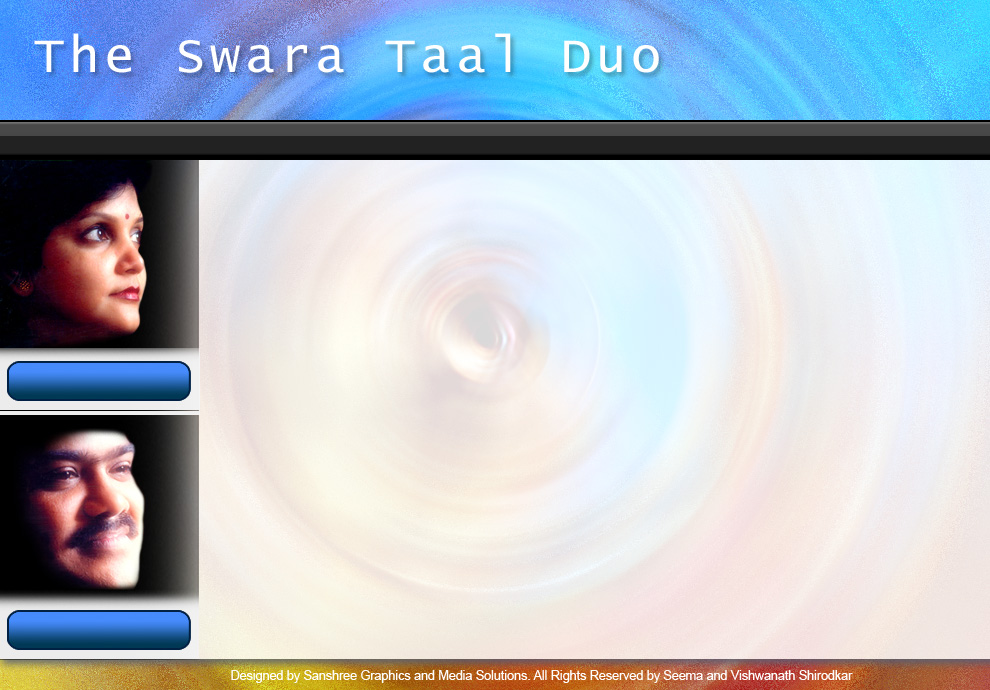
Projects and Activities
- Conducted a Two day Intensive Workshop on the 'Study of Laya' for Smt.Manik Bhide's desciple's at Sharada Sangeet Vidyalaya Kalanagar, Bandra,Mumbai.
- Conducted a 3 hour Lec-Dem on 'Ideal Accompaniment on the Tabla' for Music teacher's of the Municipal Corporation of Mumbai School's.
- Conducted a 3 hour Lec-Dem on 'Appreciation of Tabla and Harmonium' at IIT Mumbai.
- Conducted a 3 hour Lec-Dem on 'Appreciation of Tabla and Harmonium' at Cupertino,Silicon Valley, California U.S.A.
- Conducted a 3 hour Lec-Dem on 'Art Of Accompaniment on theTabla and Harmonium' at IIT Kanpur.
- Will be conducting a 6 day intensive workshop every year at Chinmaya Naada Bindu, Chinmaya Vibhooti, Kolvan, Taluka Mulshi, District Pune.
1)Art of Accompaniment (Tabla)
2)Samvad through Samvadini (Harmonium)

Art of Accompaniment
Accompaniment on the Harmonium,Sarangi,Tabla should be Complementary,Supplementary (add to in a way that improves or completes the main idea or subject put forth or dealt with by the main artist)and should be such that will enhance the performance of the main artist or the lead singer or instrumentalist without any semblance of imbalance.
An accompanist has to completely get involved in the performance and has to ensure that he is in complete synchronization with the main artist. The secret behind ideal accompaniment is the perfect understanding between the accompanist and the main artist as well as amongst themselves. This helps to perfectly fine tune the performance.
Previously the accompanying artists were only supportive in their approach and their role was limited to providing the necessary accompaniment as the artists of the older generation were quite dominating in their performance. Vocal or Instrumental Indian Classical Music today has reached great heights due to the revolutionary trends set up by the main artists, whereby accompaniment has become challenging, innovative and yet creative, thus achieving a harmonius blend of aesthetic and emotive music which takes the ordinary as also the discerning listener to experience divine and excellent music.
Whenever any main artiste performs the harmonium accompaniment not only follows but provides valuable inputs spontaneously which when accepted and enhanced results in a beautiful musical dialogue. No wonder then, that the harmonium is also called the Samvadini.
Harmonium accompaniment is a varied and complex affair. Accompaniment with valuable creative inputs as well as imagination and creativity with the speed and dexterity of the vocalist is a challenging feat which one has to do with fluency and mellifluousness thus making accompaniment a treat with a high degree of finesse. This is achieved through diligence, conscientiousness and focused sincerity.
Percussion support calls not only for maintaining a rhythmic framework, but also gives ample scope for demonstrating the complex rhythmic patterns which are creative, spontaneous and at the same time not at all dominating.
The accompanists have to support the main artist by enriching his or her movements and contributing to the totality of the musical experience. he should incessantly provide the main artist with inspiration, opening the doors to rich bank of musical possibilities and also provide an extra punch to his or her enticing renditions.